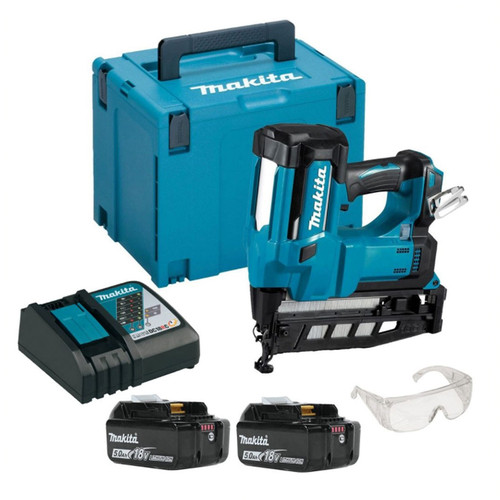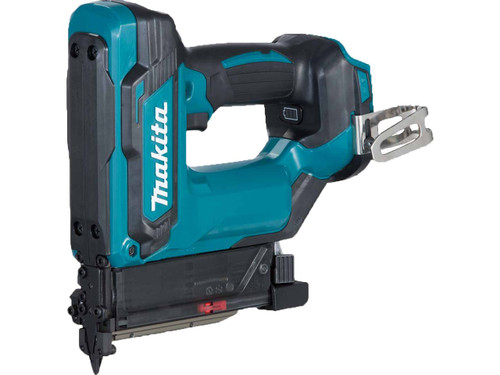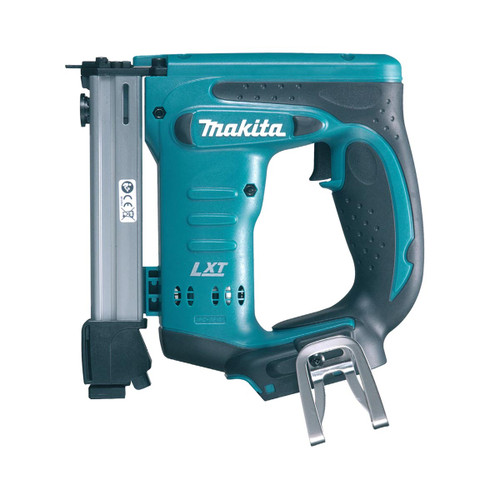-


Makita GN900SE 7.2V First Fix Gas Nailer with 2x 1.0Ah Batteries
In Stock
Add to Basket£489.99£408.32 (ex.VAT) -


Makita DBN600ZJ 18V Second Fix Nail Gun in Makpak Case (Body Only)
In Stock
Add to Basket£485.51£404.59 (ex.VAT) -


Makita GF600SE 7.2V Second Fix Gas Nailer with 2x 1.0Ah Batteries
In Stock
Add to Basket£465.70£388.08 (ex.VAT) -


Makita DBN600RTJ 18V LXT Cordless Second Fix Straight Nail Gun with 2x 5.0Ah Batteries
In Stock
Add to Basket£647.81£539.84 (ex.VAT) -



Makita F-33948 16Ga Brad Nails 32mm (2000 Pack)
In Stock
£7.49£6.24 (ex.VAT)
Add to BasketQuantity Price Per Unit (Inc.VAT) Price Per Unit (Ex.VAT) Discount Buy 2 - 4 £0.00 £0.00 5% Buy 5 - 9 £0.00 £0.00 10% Buy 10 - 19 £0.00 £0.00 15% Buy 20 - 999 £0.00 £0.00 20% -
SALE


Makita DPT353Z LXT 18V Pin Nailer (Body Only)
In Stock
Add to BasketSave £17.42
£417.97£435.39£348.31 (ex.VAT) -
SALE


Makita DST221Z 18V LXT Cordless 10mm Stapler (Body Only)
In Stock
Add to BasketSave £12.70
£304.82£317.52£254.02 (ex.VAT) -
SALE


Makita ST113DZ CXT Stapler 12V (Body Only)
In Stock
Add to BasketSave £12.14
£230.59£242.73£192.16 (ex.VAT) -
SALE


Makita PT001GZ02 40V Max XGT Brushless Pin Nailer in a Makpac Type 3 Case (Body Only)
In Stock
Add to BasketSave £19.83
£376.72£396.55£313.93 (ex.VAT) -


Makita FN001GD202 40V Max XGT 18Ga Brushless Brad Nailer with 2x 2.5Ah Batteries
In Stock
Add to Basket£687.97£573.31 (ex.VAT) -


Makita DFN350ZJ 18V LXT 18G Brad Nailer in a MAKPAC Type 3 Case (Body Only)
In Stock
Add to Basket£426.89£355.74 (ex.VAT)
Makita Nailers & Staple Guns

Makita Nail Guns & Staple Guns
Makita's range of nail and staple guns in the UK includes both corded and cordless models. Some of the popular models available in the UK include the AF506N, a pneumatic brad nailer that can drive 18-gauge nails from 15mm to 50mm in length, and the DST221Z, a cordless stapler that can drive 18-gauge staples from 10mm to 22mm in length. These tools are designed for various woodworking and construction applications and are known for their durability, reliability, and performance. They often come with features such as tool-free depth adjustment, easy jam clearance, and ergonomic designs for comfort during use.
Shop the range now with free delivery and 0% interest finance options available.
Makita Nail Gun Features
Adjustable depth settings
Many of Makita's nail and staple guns feature tool-free depth adjustment, allowing for precise control over nail or staple depth.
Quick jam release
In the event of a jammed nail or staple, Makita's nail and staple guns often have a quick-release feature that allows for easy jam removal.
Rubberized grips
Many models feature rubberized grips that provide greater comfort and control during use.
Trigger locks
Some models have trigger locks that prevent accidental firing.
Nose designs
Some models feature a quick-release nose design that allows for easy access to the nail or staple chamber for maintenance or clearing of jams.
Dry fire lockout
Some models have a dry fire lockout feature that prevents firing when the nail or staple magazine is empty.
Multiple nail or staple sizes
Makita offers nail and staple guns that can handle various nail and staple sizes and gauges, providing greater versatility for different projects.
Best Sellers
Some of our best-selling Makita nailers and staplers include:
- Makita GN900SE 7.2V First Fix Gas Nailer with 2x 1.0Ah Batteries – a cordless clipped head framing nail gun developed for a wide range of framing applications.
- Makita DST112Z 18V LXT 10mm Stapler (Body Only) – a Makita stapler that accepts 7-10mm length staples and has a powerful spring drive mechanism.
- Makita PT001GD201 40V Max XGT Brushless PIN Nailer with 2x 2.5Ah Batteries - low recoil mechanism allows for easier nailing of long pins without having to press the pin nail gun down firmly.
Other Makita ranges we stock
Check out some of our most popular Makita ranges we stock at Toolden:
Please do not hesitate to contact us if you have any further questions.
FAQs
What is the difference between a brad nailer and a finish nailer?
The main difference between a brad nailer and a finish nailer is the size and gauge of the nails they use. Brad nailers typically use 18-gauge nails that are thinner and smaller in diameter than the nails used in finish nailers, which are usually 15 or 16-gauge. As a result, brad nail guns are suitable for more delicate trim and moulding work, while finish nail guns are better suited for heavier duty trim work, such as baseboards and crown moulding.
Additionally, brad nailers leave smaller holes in the wood compared to finish nailers, which can be an advantage when working with delicate or expensive wood.
Can I use a cordless nail gun for heavy-duty construction projects?
Cordless nail guns can be used for heavy-duty construction projects, but their performance and power may be limited compared to pneumatic nail guns. Cordless nail guns typically have a lower driving force and smaller magazine capacity, which may not be sufficient for larger or more demanding projects. However, newer cordless models with advanced battery technology and improved driving mechanisms can offer comparable performance to pneumatic nail guns, especially for smaller-scale projects or when mobility is a priority. Ultimately, the suitability of a cordless nail gun for heavy-duty construction projects will depend on the specific tool's features and the requirements of the project.
How do I clear a jammed nail or staple from a Makita nail gun?
To clear a jammed nail or staple from a Makita nail gun, first, disconnect the power source and remove any remaining nails or staples from the magazine. Then, use a tool or screwdriver to gently remove the jammed nail or staple. Be careful not to force or damage the nail gun's internal components. After clearing the jam, reinsert the nails or staples and test the nail gun before resuming work. Some Makita nail guns may have specific jam release mechanisms or instructions, so it's always a good idea to refer to the tool's manual for proper jam clearing procedures.
